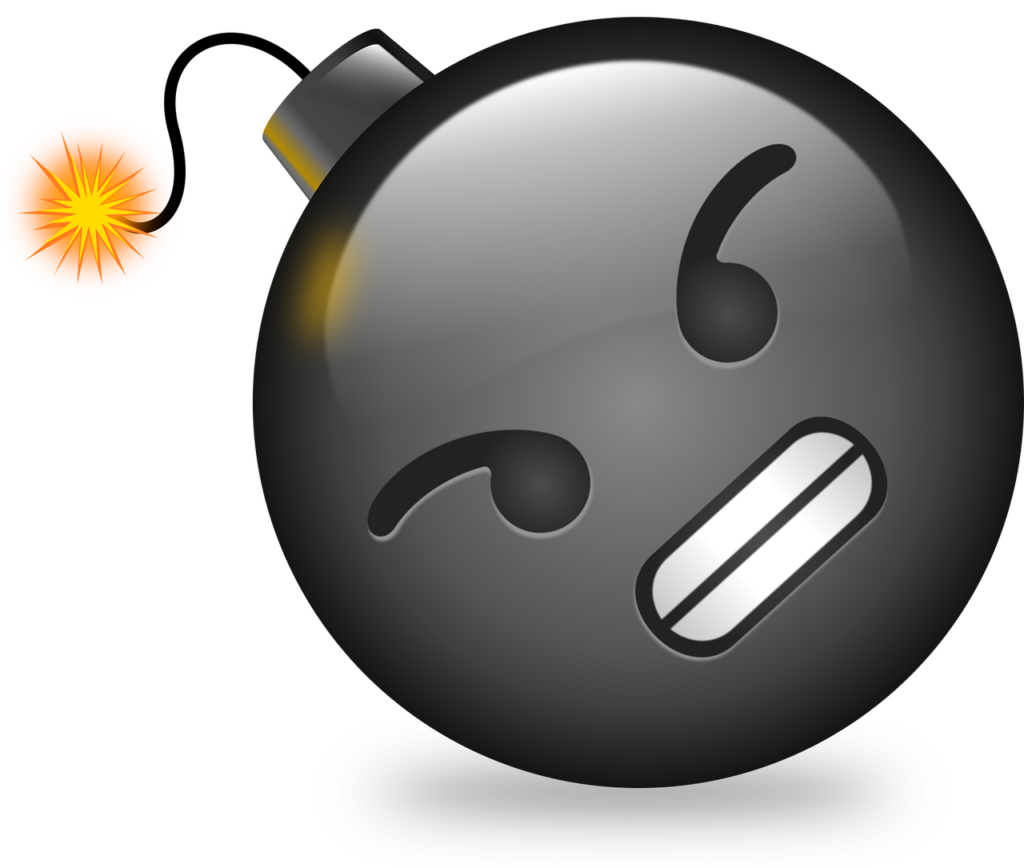Blenders can be used for a wide variety of purposes. If you’ve never experienced a blender explosion where the pitcher’s gooey contents are blasted in all directions and the top falls off, the concept of such a sight might seem rather comical! But if you’ve been the person operating the blender or an innocent witness during such an explosion, then you know it’s not anything to chuckle about. Cleaning up after such a frightening situation is a tremendous hassle and, what’s worse; it could even result in injury and discomfort. When your goal was to unwind with a tasty frozen cocktail or nutritious smoothie, none of these outcomes is ideal.
Blenders can blow up for a variety of reasons, some of which we’ll cover in this article. But while there have been a few known cases of blender explosions in the past, this is not a regular occurrence with contemporary blenders and nothing to make you fear adding this very useful appliance to your kitchen family. Now that we have a better understanding of blender explosions, how can we prevent them?
How To Prevent Your Blender From Exploding
Yes, blenders can explode if you’re referring to a literal explosion in which the appliance blows up into bits and pieces. The blades of blenders spin between 18,000 and 30,000 revolutions per minute while in operation. That is incredibly quick. Rarely, the blender’s blades may separate, becoming missiles that could pierce the jar and inflict serious harm. Because of this, blenders are a device that, when they break down, may be quite deadly.

What Causes Blender Explosions?
Here are a few of the most typical causes of the blender’s explosion.
1. Fluctuation in Electricity
Your appliances could be harmed by electrical fluctuations, short circuits, or, to put it another way, any unexpected current activity. The explosion is one of the damages, in addition to all the others.
2. Blender Overheating
Overheating may occur if your blender runs at high speed for an extended amount of time. If the temperature rises too much, an explosion could result from this.
A blender may become too hot for a variety of reasons. Additionally, it could be a defect, an electrical fluctuation, excessive use, improper handling, and much more. The blender and its components may become damaged if the motor overheats. Smoke and odors are palpable, but the blender explosion is the most severe reaction you could experience as a result of this overheating.
3. Misusing the Blender
Some procedures must be performed when using an appliance, such as a blender. When used improperly, it can cause significant harm. The following are some fundamental guidelines for using an electronic device like your blender:
- Never abruptly change from one speed to another. Similar to that of changing your car speed gear every second, the blender would have to work more than necessary, which might damage it, overheat it, and even cause the blender to explode.
• Don’t needlessly turn on an empty blender. Long-term use of an empty blender might cause the blades to overheat.
• Use a dry or moist piece of cloth to frequently deep clean your blender’s motor. Make sure the appliance is unplugged and the power is off. The food particles, which may cause some internal damage, should be removed along with the dust, filth, and other impurities.
• Every minute or every two minutes, give the machine a 10 to 20-second break.
• A fifth or less of the blender’s container should be left empty. This would simplify the process of blending, otherwise, the ingredients won’t have enough room to move around. Therefore, blending in a full jug is not recommended. This could ultimately generate pressure that might cause the blender to explode.
• Last but not least, before using a blender, thoroughly read the instruction booklet. Avoid any circumstances that the company forbids. Adopt the blender usage suggestions.

4. Increasing Malfunction or Internal Malfunction
Blenders do eventually lose their durability and start to become feeble because everything and everyone in this world has a lifespan — that’s just how things are. Blenders are no different. It has frequently been reported that blenders spontaneously burst into flames without any warning. There was just one significant factor identified — the blender’s advanced age. Therefore, the explosion could have occurred if your blender was too old or had been overworked. The good news, however, is that blender explosions don’t frequently occur for this reason.
The blender malfunctioning due to a manufacturing defect is another factor that might exist. Again, this is a unique circumstance. Although it seldom occurs, it might be one of the causes.
5. A lot of Stuff in the Blender
Although it makes sense to want to prepare the largest quantity of frozen margaritas in one go as possible, an overfilled container runs the risk of the blender jar exploding from high pressure.
When in doubt, mix in small quantities for the best results and to avoid a blender explosion. Use the fill line as your guide for the maximum capacity.
6. Improper Lid Placement
Securing the cover before you begin blending is one of the simplest methods to ensure that you don’t get your blender mixture all over you or your kitchen. Without a properly fastened lid, blending can start with enough energy to drive the lid out of place and send the contents flying across the room. Check the lid just before blending at all times. It is comparable to fastening your seatbelt after getting behind the wheel of your vehicle.
7. Blade Malfunction
Not only that but once your blender’s blades quit functioning properly, there’s a good risk they’ll cause an explosion at some point.
How to Prevent Blender Explosion?
The following are some methods for avoiding blender explosions
- First and most important, is to always adhere to the manufacturer’s guidelines.
• Verify that all of the components of your blender are in good operating order before using it.
• If the blender jar is not properly fastened, never turn on the blender. Before starting the blender, double-check that the lid is firmly fastened.
• Make use of high-end blenders that can resist pressure and heat.
• Before operating your blender, make sure all of the components are functional and in good shape.
• Don’t fill the jar to the brim.
• While mixing food or beverages, keep an ear and eye on your blender at all times to monitor any unusual movements or sounds.
• Last but not least, to avoid food buildup, properly clean the blender jar after each use. Food debris has the potential to obstruct the blender’s motor vents and ignite.
What Should You Avoid Putting in Your Blender?
Do you also use your blender for everything? Unfortunately, doing so increases the risk of the blender exploding and blade damage.
Some kitchen tools or equipment have made cooking incredibly simple, and now our lives would feel lacking without them. Your blender is one such device that allows you to quickly blend a wide variety of
ingredients. Your blender makes it possible to create anything, including chutneys, smoothies, ingredient mixtures, and pastes. Your blender is versatile, but it has certain drawbacks. Do you know, for instance, which foods can harm your blender? When we learned, we were also astonished, so let’s find out more about these things today.
Ice cubes
Since a conventional blender’s blades aren’t designed to blend hard, solid objects, it can be challenging to blend ice cubes in one. If you do this, you can get pieces of food that are uneven or your blades might lose their sharpness. In addition, blender blades occasionally break and then detonate. As a result, you must read the recipe and combine your ingredients as directed. If you are a frequent ice blender think about getting a blender made specially to accommodate this. In fact, ice can do more harm than good to your blades.
Hot liquid items
When heated liquids are combined in a blender, they may erupt and expand, creating internal pressure that can cause the lid to fly off. You shouldn’t use your blender to blend hot liquids. The beverage could explode as a result, burning anyone in its path. Before adding hot drinks to the blender, wait for them to cool slightly. If you have a blender and a mixer, making the soup will be easier in your mixer, especially one designed for that purpose.
Frozen items
When blending large or especially tough frozen foods, such as fruit or nut butter, the blender container may fracture, sending glass or plastic fragments flying everywhere and resulting in food splatters. And while the best kitchen appliance for smoothie-making is your blender, you cannot, however, prepare frozen fruit in it, unless you have invested in one of those heavy-duty ones that can stand up to anything! Blending frozen meals or other frozen items in a blender can produce lumpy results. The blades on your blender could also break under certain conditions. To avoid this, give your frozen meals a little time to thaw before adding them to the mix. If possible, you can make your mixture or smoothie first and then chill it.

Meat bones
Large bones should not ever be put in a blender since they can jam and damage the blade. These include bones of chicken, turkey, or pork. Even food items without big, substantial bones, such as little fish, might block your blades. To blend fish without running the risk of the bones becoming stuck, take out the bones and add an equal amount of water.
Conclusion
It’s not very often, but blenders can explode. There is a 99% probability that you won’t ever experience this if you use your blender correctly and cautiously. However, there is still a 1% risk that your blender may catch fire so why not take precautions already? Try to utilize a blender by adhering to all the above-mentioned guidelines.


